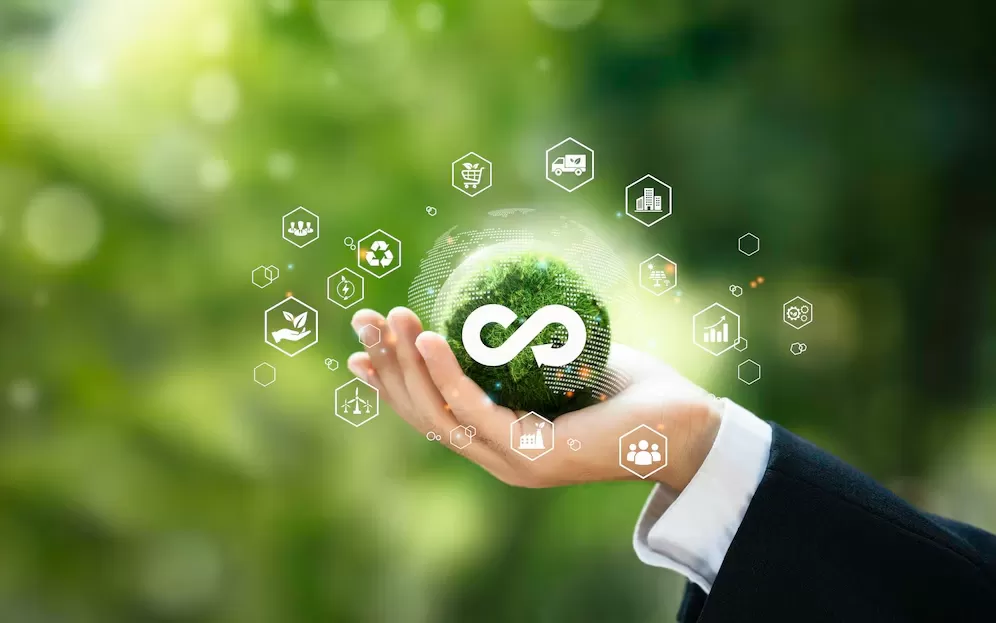The technology sector is often seen as a driving force behind the innovation that shapes the modern world. However, the environmental impact of the technology industry—such as high energy consumption, e-waste, and carbon emissions—has become a growing concern. As the demand for technological advancements continues to rise, it is crucial that the sector shifts towards more eco-friendly practices to minimize its carbon footprint and contribute to global sustainability efforts.
In this blog, we will explore how the technology sector can help protect the environment by adopting eco-friendly practices and innovations, and why these changes are critical for both the planet and the industry’s future.
1. Energy-Efficient Data Centers
Data centers are the backbone of the digital economy, powering everything from cloud services to online gaming and e-commerce platforms. However, these data centers consume vast amounts of energy, contributing significantly to global carbon emissions. Transitioning to energy-efficient data centers can help drastically reduce their environmental footprint.
How technology can help:
- Renewable Energy Integration: Many leading tech companies, such as Google, Microsoft, and Amazon, are investing heavily in transitioning their data centers to renewable energy sources. By using solar, wind, and hydroelectric power, data centers can significantly reduce their reliance on fossil fuels.
- Energy-Efficient Hardware: Advances in server design and chip technology have allowed data centers to operate more efficiently. For instance, newer servers are designed to consume less power and produce less heat, reducing the need for energy-intensive cooling systems.
- Artificial Intelligence (AI) for Optimization: AI-driven systems are now used to monitor and manage the energy consumption of data centers. These systems can predict and optimize energy usage, dynamically adjusting server workloads to minimize energy waste while maintaining high performance.
Future Impact:
- Lower Carbon Footprint: As more data centers adopt renewable energy and energy-efficient technologies, the tech industry’s overall carbon footprint will shrink, helping to combat climate change.
- Cost Savings: Over time, the energy savings associated with greener data centers will lead to significant cost reductions for businesses, proving that eco-friendly practices can also be economically beneficial.
2. Reducing E-Waste Through Sustainable Manufacturing
The rapid pace of technological innovation often leads to the disposal of outdated devices and electronics, contributing to the growing problem of electronic waste (e-waste). However, the technology sector is taking steps toward more sustainable manufacturing practices that can help reduce e-waste and improve product lifecycles.
How technology can help:
- Modular Design: Some companies are moving toward modular designs for their devices, which allows components like batteries, screens, or memory modules to be replaced or upgraded easily without having to discard the entire product. This approach can help extend the lifespan of products, reduce waste, and make repairs more accessible.
- Recycling and Reusing Materials: Tech companies are increasingly adopting closed-loop recycling systems, where materials from old devices are reused in the production of new ones. Apple, for instance, has developed a robot named Daisy, which disassembles old iPhones to recover valuable materials such as gold, copper, and aluminum, which can be reused in new devices.
- Sustainable Manufacturing Processes: Companies are investing in more sustainable manufacturing practices by using recyclable materials, reducing the use of harmful chemicals, and minimizing resource extraction. For example, some companies are now using recycled plastics and bio-based materials for their products.
Future Impact:
- Less E-Waste: By adopting sustainable design and manufacturing practices, the technology industry can reduce the amount of electronic waste sent to landfills, decreasing the strain on the environment and encouraging a circular economy.
- Better Resource Efficiency: More efficient use of resources means fewer raw materials are needed, which helps preserve natural ecosystems and reduces the environmental impact of mining and material extraction.
3. Green Cloud Computing and Virtualization
Cloud computing has revolutionized how businesses and individuals store and access data, but traditional, on-premise computing infrastructures can consume a significant amount of energy. By moving to the cloud and adopting virtualization technologies, organizations can reduce their energy consumption and carbon emissions.
How technology can help:
- Cloud Service Providers and Sustainability: Major cloud providers such as Amazon Web Services (AWS), Google Cloud, and Microsoft Azure are increasingly committing to running their data centers on renewable energy. These platforms also employ virtualization, which allows multiple virtual machines (VMs) to run on a single physical server, optimizing resource usage and reducing energy consumption.
- Server Virtualization: Virtualization allows multiple workloads to be hosted on fewer physical machines, leading to greater energy efficiency and reduced server sprawl. This not only saves energy but also cuts down on the need for physical space and cooling systems.
- Energy-Efficient Cloud Solutions: By using cloud services, businesses can leverage optimized, energy-efficient infrastructure without having to build and maintain their own energy-consuming data centers. Cloud solutions are often more eco-friendly than traditional, on-site IT infrastructure.
Future Impact:
- Lower Environmental Impact: Cloud computing, especially when coupled with renewable energy, can significantly lower the carbon footprint of businesses by consolidating energy usage and streamlining operations.
- Smarter Resource Allocation: Virtualization allows for more efficient use of computing power, resulting in reduced energy consumption and a more sustainable use of resources.
4. Sustainable Software Development
While hardware has received much attention regarding sustainability, software also plays a crucial role in creating eco-friendly IT solutions. Efficient software design can reduce the computational power needed to perform tasks, which in turn can lower energy consumption.
How technology can help:
- Optimized Code: Developers are focusing on writing more efficient code that requires fewer resources to run, thus reducing the need for power-hungry servers and data centers. For example, reducing the complexity of algorithms or using more energy-efficient programming languages can result in lower energy consumption.
- Energy-Efficient Apps: Many tech companies are designing mobile applications, software, and websites that consume less power, especially on mobile devices. These apps run more efficiently, which reduces the load on devices and their need for constant charging.
- Green Software Engineering: The rise of green software engineering focuses on creating software solutions that are designed with energy efficiency in mind. This includes everything from optimizing server-side computing to reducing network usage, all of which helps minimize environmental impact.
Future Impact:
- Reduced Carbon Footprint: Efficient software reduces the energy required for processing, data transmission, and storage, leading to a decrease in the carbon footprint of IT systems.
- Lower Energy Consumption for Users: As more software developers adopt sustainable practices, the energy consumption of everyday applications will continue to decrease, benefiting both consumers and the environment.
5. Sustainable IT Practices in Business Operations
Beyond just the products they create, technology companies and businesses can adopt a range of sustainable practices in their daily operations to reduce environmental impact. These include adopting circular economy principles, reducing paper usage, and fostering remote work.
How technology can help:
- Remote Work Solutions: The COVID-19 pandemic accelerated the adoption of remote work technologies, and many businesses are now maintaining hybrid or fully remote models. This reduction in commuting helps decrease carbon emissions associated with transportation, while also promoting better work-life balance for employees.
- Paperless Systems: Technology has made it easier for businesses to go paperless. Cloud-based document storage, digital signatures, and electronic invoicing reduce the need for paper, thus saving trees and reducing waste.
- Sustainable IT Procurement: Many tech companies are choosing to buy energy-efficient equipment and adopt sustainable IT solutions. For instance, when purchasing new hardware, companies may opt for devices that are ENERGY STAR certified or have minimal environmental impact.
Future Impact:
- Lower Environmental Footprint: By adopting eco-friendly IT practices across business operations, companies can significantly reduce their overall environmental footprint.
- Promoting Sustainability as a Standard: As businesses increasingly adopt sustainable IT practices, it encourages other industries to follow suit, creating a ripple effect that helps drive global sustainability efforts.
Conclusion
As the technology sector continues to grow, it is essential that the industry embraces more sustainable practices to help protect the environment. From energy-efficient data centers and green cloud computing to sustainable software development and reducing e-waste, the potential for eco-friendly IT practices is vast.
By prioritizing sustainability, the technology sector can contribute significantly to global efforts to combat climate change, reduce waste, and preserve natural resources. In doing so, not only will the technology sector play a crucial role in protecting the environment, but it will also build a more sustainable and resilient future for generations to come.











